- Home
- Duncan James
Motorbike Men Page 2
Motorbike Men Read online
Page 2
“Since you mention it,” said Forsyth, “recent telegrams have suggested that a couple of governments overseas are taking rather more than a scientific interest in the work being pioneered in this country. Russia and Saudi Arabia spring to mind, but I’d need to check.”
“I also seem to recall that a few recent intelligence updates have suggested a whiff of unusual interest being shown,” added the Home Office man, James Burgess. “But like you, William, I’d need to check to be sure.”
“Then please do – all of you,” commanded Algar. “I’d like to know at our next meeting if anything suggesting a threat is developing, so that we can react accordingly. Get the usual checks done by the Security Services, and I’d like your people, Len, to report anything they may have picked up.” This was to both Sir Len Watkins at Defence and the Chief of Defence Intelligence Staff (DIS). “We will discuss it again when next we meet,” he said, and adjourned the meeting.
***
Like everyone else when they next met, each member of the JIC had been given a special brief prepared by the officials in their own Department. Similarly, the brief that had been prepared for the Chairman rehearsed the background to the work that had been going on for decades into the possibility of providing for future energy needs by harnessing nuclear fusion. They all knew that fusion reactions had been an almost daily event at Culham for some decades, but that a self-sustaining reaction was yet to be developed. This was the next big step – to develop a reactor that would emit more energy than it consumed and was able to generate the extreme temperatures needed to maintain a self-sustaining reaction. The development of such a machine was an international effort. Indeed, the Joint European Torus, the largest fusion reactor then built, was housed at Culham, while the newer and more powerful International Thermonuclear Experimental Reactor, had been built in France. In spite of this huge and expensive international effort, many countries were also pursuing their own development work. It soon became evident to the JIC that some countries believed that the results of the UK’s research at Culham were not being fully shared with them.
“Up to a point, they’re right,” said Algar. “There are aspects of Barclay’s work which we are keeping to ourselves for the time being. Not just Barclay’s work, either. The research into new materials, such as niobium tin and niobium titanium, capable of withstanding the enormous temperatures developed in the reactors, is also something we are reluctant to share at the moment, although we know that others are following the same lines of development. But for various reasons, Barclay’s work is attracting undue and unwelcome attention, and we need to discuss what to do about it.”
“It seems,” said Sir Wilfred Forsyth of the Foreign office, “that it is Barclay’s work on using laser containment that is exciting the greatest interest at the moment.”
“I agree,” said the Defence man, Len Watkins. “There appears to be a generally held view that his work is far ahead of that being carried out elsewhere, and rivals are keen to catch up.”
“Or slow his progress,” suggested Forsyth.
“What is that supposed to mean?” asked Burgess of the Home Office.
“It means,” said Algar, “that there are two factions at play here, if I understand the briefings correctly. One wants Barclay to share his research findings with them now rather than later, while the other wants to stop him making further progress while they catch up.”
“How would they do that?” asked Hooper from the Treasury.
“By removing him from the scene, I guess,” replied Watkins.
“Do you mean kidnapping the man?”
“Or worse.”
“That is scandalous. Who are we talking about here?”
“There are two rival camps here, so I believe,” said Forsyth. “My Int. people are indicating that there are those who are desperately head-hunting Professor Barclay, to get him to work for them rather than us, and there are others – or at least one other, I should say, but perhaps more – who simply want him removed from the scene. Perhaps permanently.”
“I agree,” said Algar. “I know for a fact that the Americans have offered Barclay very attractive terms indeed to work for them at the National Ignition Facility based at the Lawrence Livermore laboratory in California, where they are already studying the use of lasers in the nuclear fusion field. This is an approach made by academics to another academic rather than by the Government, although of course the laboratory is backed by the US Government, so the administration must know about the approach and approve of it.”
“What about Barclay’s reaction?” asked Burgess.
“Interested, I’m told, but so far has decided to stay put,” replied Algar. “There is another player, though, who has yet to show their hand, but who may eventually manage to turn him.”
“You mean Abu Dhabi?” asked Forsyth, rhetorically.
“Abu Dhabi?” asked Hooper disbelievingly.
“Exactly,” said Forsyth. “It sounds incredible, but the United Arab Emirates are actively considering entering the field themselves, even at this late stage. They have invested countless billions of their oil revenue into their infrastructure, - roads, hospitals, education, tourism and so on, - and now realise that when Abu Dhabi’s oil reserves run out, which they will eventually, they will have nothing with which to service this huge investment. Developing an alternative energy source, which they can sell to their neighbours when they, too, run out of oil, is being seriously studied.”
“So how does Barclay fit into this grand scheme?” asked Watkins.
“They are talking about approaching him to start up the project,” said Algar, “and to run it. They could afford to pay him whatever he asked, and provide him with the sort of research facilities that at present he can only dream of. They have yet to approach him, although we suspect he has heard of their interest through his academic connections.”
“That could explain why he has resisted the American so far.”
“Whatever happens, we need to keep him here if we possibly can, although there is no way we could compete financially,” said Hooper.
“In the end, it’s his choice anyway,” pointed out Burgess.
“What about this apparent threat to remove him from the scene?” asked Watkins.
“According to our information,” said the Head of SIS, “the Russians at least want him out of the way. There seem to be two reasons for this, but the main one is to slow down the development of an alternative energy source until their own vast reserves of oil and gas are nearing depletion, and then to capture the new market to themselves. In particular, they are keen that he doesn’t work for the Americans.”
“So are we,” agreed Algar, “but for different reasons. I also believe that, if he goes to Abu Dhabi, the Iranians and the Saudis may also then be tempted to put an end to his work.”
“So how do we assess the threat?” asked Watkins.
“Ignoring the threat to our own national interests for the moment, Barclay himself seems to face a real threat of either kidnap or assassination,” said Algar. “My view is that Section 11 should be tasked to keep a close eye on the man. We shall need to decide later whether Barclay should be briefed, or whether we just get on with it without his knowledge. I also think we should double-check the security clearances of all those who are working closely with Barclay, especially his small teams at Culham and Harwell. Perhaps you could set that in motion as soon as possible,” he said to the Home Office Permanent Secretary.
They all nodded their agreement.
“Good,” said Sir Robin Algar. “I suppose I’d also be well advised to tell the Prime Minister, about this.”
Again, they all nodded.
***
CHAPTER TWO – SECTION ELEVEN
Many people who were involved in the security and intelligence business had often thought that there were too many different organisations involved, in one way or another. For instance, one organisation looked after overseas threats, while another gathered int
elligence about threats on the mainland, and yet a third was responsible for organised crime. These responsibilities frequently overlapped, which was why there were the ‘joint’ organisations. Bits and pieces of the other three, put together in an effort to avoid duplication and to ‘co-ordinate’. The Government appeared to think that the answer to every new threat was to add a bit more bureaucracy to the system. But inevitably, they all tended to trip over one another from time to time, while the constituent parts owed allegiance to their own parent body, so rivalry was never completely eliminated, and individuals were always looking over their shoulder to make sure that nothing was done to prejudice their future career prospects. Reporting chains became a nightmare, and budgets were a permanent source of conflict.
The tasks of these various bodies became increasingly complex as time went on. The Chinese clans for example, operated both abroad and in UK. At the same time, the clans were organised crime (Special Branch), a threat to mainland UK (MI5) and were often based overseas (MI6). There were others, too, like the Mafia, both the Italian and the Russian versions, and the drug barons of Columbia and Afghanistan. Add a dash of international terrorism, and management became virtually impossible, not least because the Military inevitably became involved on top of everyone else. Look at the al-Qa’Aeda situation, for instance, and the Taliban, with its international drugs trade. So other countries were added to the pot, to represent their national interests as a threat developed. The reporting chain upwards was complex, too. Some organisations reported to the Home Office, others to the Foreign Office, and yet more to the Ministry of Defence. A few, rather special agencies, reported direct to the Prime Minister’s office.
The United States played a trump card, or so it thought, in safeguarding its national interests, when it formed the new, huge and vastly expensive organisation that it called the Homeland Security Department. The outcome, in reality, was to slam the door on the outside world, friends and foes alike, making life difficult if not impossible for visitors to the US, whether they were business or pleasure travellers. But the Americans felt more secure because of it, so that was all right.
Then the UK Government created yet another ‘secret’ organisation, which immediately received widespread publicity, especially in the tabloids. It was grandly called The Fixated Threat Assessment Centre, run by a mixture of the police, doctors and health officials, whose remit it was to identify and target individuals whose obsessive behaviour could pose a threat to people in public life. Those individuals posing the threat could be ‘sectioned’ under mental health legislation, and locked up, without trial, on medical grounds. And it was a real enough threat. BBC personality Gill Dando had been murdered by a stalker, and so, overseas, had the Swedish Foreign Minister, Anna Lindh. But the human rights lobby immediately saw this as a draconian measure for dealing with terror suspects without putting the accused before a judge and jury.
It was just as well they didn’t know about Section 11.
Run jointly by MI5 and MI6, Section 11 (5+6) was a small, very top-secret unit, which had so far managed to remain top secret. It was one of those organisations that reported direct to Downing Street, through the Cabinet Secretary, who was also Chairman of the Joint Intelligence Committee (JIC). S.11 had a worldwide remit to guard high value UK citizens when they were at maximum risk, and, if necessary, to ‘eliminate’ any serious threat to their safety. It wasn’t concerned with royalty or senior ministers or foreign dignitaries – there was already a separate organisation to look after them, in the form of the Royalty and Diplomatic Protection Unit, run by the Metropolitan Police from Scotland Yard. Section 11 looked after other, less obvious but none the less high value targets, some of whom never realised they were the objects of special attention. But they were all individuals who, because of their exceptional value to the country, were naturally also of interest to the country’s enemies.
Section 11 had managed to remain undetected by the media and others simply by virtue of the way it was organised and operated. It had a discrete budget provided by its parent organisations, which each made a contribution towards the cost of its operations. Although S.11 did not have its own budget voted by Parliament, it was understood that whatever it wanted, it got. Not for them, however, a smart Headquarters building in Whitehall, or fast cars, or odd-looking uniforms, or any of the trappings which the public, and the media, come to expect of Government Quangos of this sort. They went out of their way to remain – well, out of the way.
Their HQ was in a rather down-at-heel terrace of offices over an also rather down-at-heel row of commercial properties - shops, cafés, pizza bars, solicitor’s offices, a laundrette, a travel agent, fish and chip shop, and so on. It was in Clerkenwell, not far from the Mount Pleasant Post Office sorting office and Saddlers Wells opera house. The street was so ordinary that nobody took any real notice of it, and certainly never went there unless they lived or worked nearby and wanted a newspaper, or a quick coffee, or a sandwich for lunch. The frontage of the terrace had been turned into a pedestrian precinct, which kept it quiet, but there was road access from the back, and the 19 and 38 busses stopped nearby on their way to Victoria and Battersea, from Hackney Marshes and Islington and other places out that way.
Being close to the Mount Pleasant sorting office had presented Section 11 with a unique advantage, since, until 2003, the Post Office used to run its own automatic underground railway to speed the mail across London. Mount Pleasant was in the middle of it, and part of the old station and tunnel now provided the Clerkenwell office with a cavernous garage beneath the building, with easy access from the street.
Easy, that is, apart from the security system.
One of the businesses on this Clerkenwell back street was a newsagent-cum-tobacconist, which had a gent’s hairdressers at the back. That’s how you got to S.11. Through the hairdressers, which was run by a certain Mr. Lawrence. Nobody knew his first name. In fact, he didn’t often do much hairdressing, either. He was ‘by appointment only’, and most casual customers soon got to learn how difficult it was to get an appointment. What he did best was to check and monitor everyone who went into the S.11 offices. At the back of his salon was an elaborate, gated security system. You needed a special pass, and the system had to recognise your thumbprint and iris pattern before it would even think of letting you go upstairs. Once you got upstairs, either from Mr. Lawrence’s salon or from the underground garage, there were more checks – a second tier security system, with more biometric tests, TV monitors and coded keypads. Only then did you get through the chipped brown-painted door marked ‘Ajax Recruitment – office staff and call centre operators always wanted.’ Pinned to the door though, at a rakish angle, was a hand written sign saying ‘No Vacancies.’ There never were. You only ever got through that door if you worked there – or if you had been invited.
Nothing changed a great deal to the appearance of the place when you were inside, either, but you would never know that the old triple-glazed window frames had bullet-proof glass in them. They were dingy corridors with Magnolia emulsion on the grubby walls, and old brown painted Victorian doors leading to offices which all looked much the same. One or two had plaques on the door, meaningless acronyms to everyone except those to whom they meant something. Things like, ‘SO to G3(M)’; ‘OIC T.12a’; ‘PA to S’, and so on. As a matter of fact, the Personal Assistant to the Head of Section (PA to S) was quite an important lady. She wasn’t just his Secretary. She actually did things on her own initiative if she thought it would save her boss a bit of time. She fixed meetings, made sure the notes, if there were any, were properly encrypted and stored securely, and, according to those who knew, made excellent coffee. She also made it her business to keep up to speed with everything that was going on, including a few things Head of Section didn’t know about, because he didn’t need to, yet. Like everyone else in S.11, she had been specially selected, and had a very high security clearance.
The people who worked in that rather gloomy Headquart
ers did all the things that get done in any other head office, as well as quite a few things that don’t. But it was a small and tightly knit community, which had at its disposal all the most modern electronic, computing and communications equipment available. The people who planned the various operations going on at any one time also monitored their progress and kept in touch with the operatives in the field. They, in turn had been trained to be largely self supporting, so when they did get on to HQ, it was usually important enough for people to take notice and do something – in a hurry. There were always people there. At night and at weekends, there would be a duty officer, a couple of people looking after communications in what was jokingly called the ‘wireless room’, and probably one or two others monitoring the progress of their particular operation. Any one of them could summon help from on-call staff at home, who reacted immediately when called upon, whatever they were doing. The newsagent was always open, too, either waiting delivery of the first editions or catching a few of the late-night visitors to Saddlers Wells. The Pakistani family who ran it didn’t mind the hours. Section 11 paid them well.
The sharp end of Section 11 was a flexible force of specially trained field officers, mostly drawn from military special forces and police special branch, but with a few from the security services. There was no telling how many might be needed at any one time, or where they might be deployed, so there was an ‘on call’ reserve pool available at ‘no notice’ if required. Reserves or not, they were very highly trained. Although when out in the field they normally worked in pairs, they were otherwise on their own with little or no immediate back up or support. They had received special training in how to blend in anonymously with the community in which they worked, wherever they were. Their first priority was to remain invisible, un-noticed. They wore casual civilian clothing, appropriate to their location, although they could dress the part of a busy stockbroker in the City if they had to. They used ordinary vehicles for getting about, although many of these had been specially modified in S.11’s own garage, conveniently housed under the Clerkenwell offices. If they needed to use public transport, they, or head office, used High Street travel agents, bought rail tickets from the station booking office, and flew tourist class. Just like anyone else. But there the similarity ended. These were very special men and women. They were fluent in at least two languages other than their native tongue. They were parachute trained, survival specialists and sniper marksmen. And they were mostly armed. They were also experts in pursuit driving, a skill often put to the test either when following a high-speed car, or when trying to shake off one behind them. The Met. Police provided that training at their Hendon driving school.

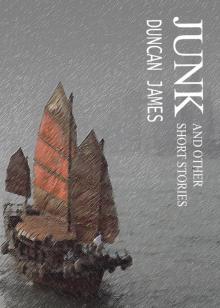 JUNK and other short stories
JUNK and other short stories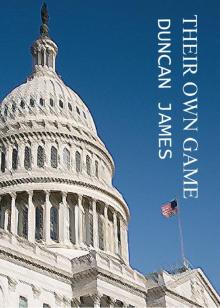 Their Own Game
Their Own Game Cashback
Cashback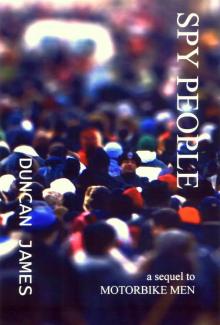 Spy People
Spy People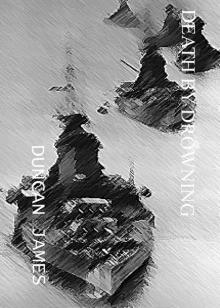 Death By Drowning
Death By Drowning Take Me Home
Take Me Home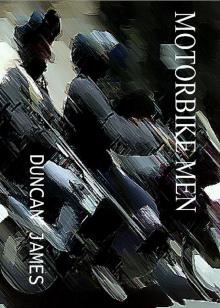 Motorbike Men
Motorbike Men